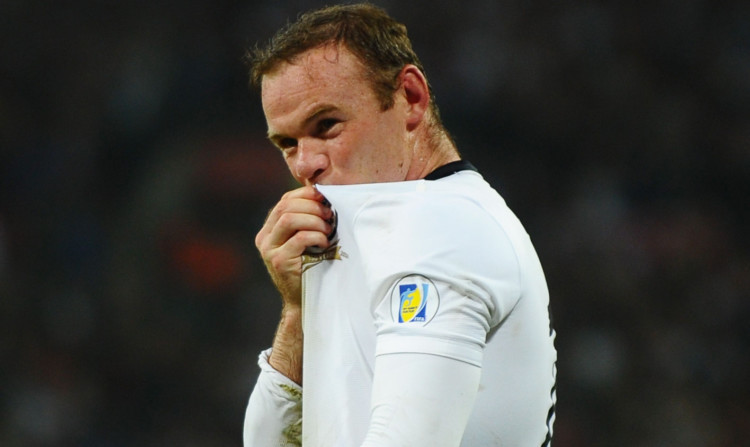
Wayne Rooney will almost certainly be named as the new England captain ahead of the Wembley friendly against Norway in September.
The striker will then lead Roy Hodgson’s team to the Euro 2016 Finals in France, no doubt winning his 100th cap and perhaps becoming the country’s record goalscorer along the way.
It seems like a great story. The FA’s PR department will no doubt give it all they’ve got. As both England’s and Rooney’s sponsors, Nike will be delighted.
And for Rooney himself, it will be affirmation that he’s no longer a hot-headed kid who gets into trouble on and off the field, but a mature professional who speaks and acts with commonsense and responsibility.
But the big problem is that he isn’t a captain.
Last season at Manchester United, he was David Moyes’ favoured son, yet the Scot
preferred to give the armband to Nemanja Vidic, Rio Ferdinand, Patrice Evra and, at times, Darren Fletcher ahead of Rooney.
But with Steven Gerrard’s retirement now confirmed, and Frank Lampard’s certain to follow, players with leadership credentials are thin on the ground.
Of the other 34 who have played for England in the last 12 months, only Everton’s Phil Jagielka is a regular club captain. Adam Lallana had the armband at Southampton but won’t be skipper at Liverpool.
Contrast that to the 1980s, when another United player, Bryan Robson, led his country. Around Robson were several club skippers Terry Butcher, Phil Thompson, Glenn Hoddle, Ray Wilkins, Tony Adams, Stuart Pearce and David Platt.
Robson was chosen because he was the best of a very good bunch. Rooney will be chosen because he’s the only feasible option.
Jagielka is coming up to 32 and will slip from the England picture as soon as one of the younger centre-backs shows he can do the job. Joe Hart and Gary Cahill have been mentioned mainly because both are pretty much guaranteed to play but they don’t have any captaincy pedigree either.
So we’re left with Wayne. He’s the team’s best player and already carries a massive burden of expectation. Will it help him to have the added pressure of being the man who speaks on behalf of the rest, enforces tactical changes and looks after 10 other players? Probably not.
But what choice does Hodgson have?

Enjoy the convenience of having The Sunday Post delivered as a digital ePaper straight to your smartphone, tablet or computer.
Subscribe for only £5.49 a month and enjoy all the benefits of the printed paper as a digital replica.
Subscribe